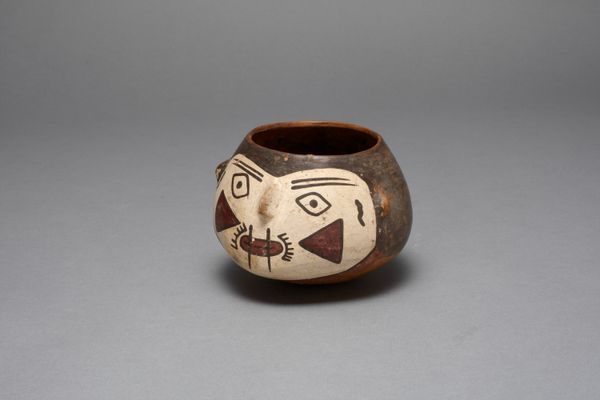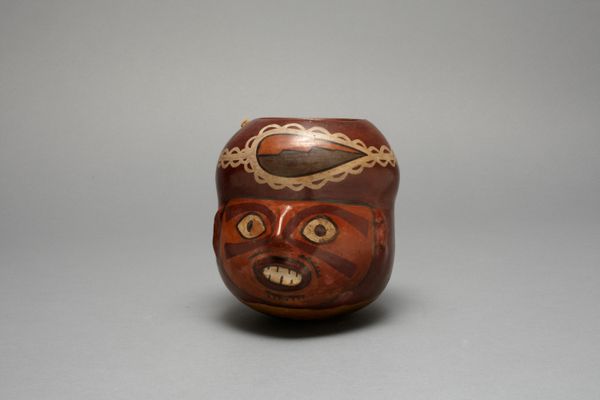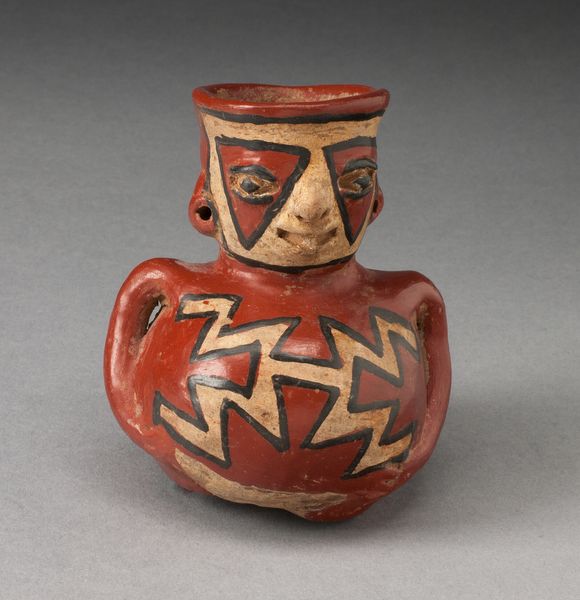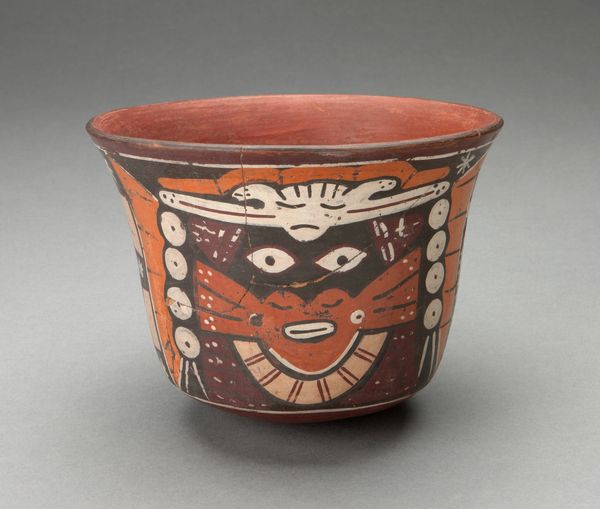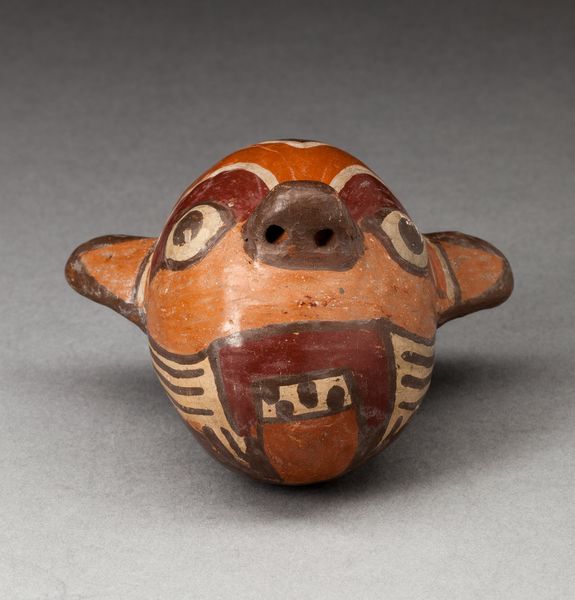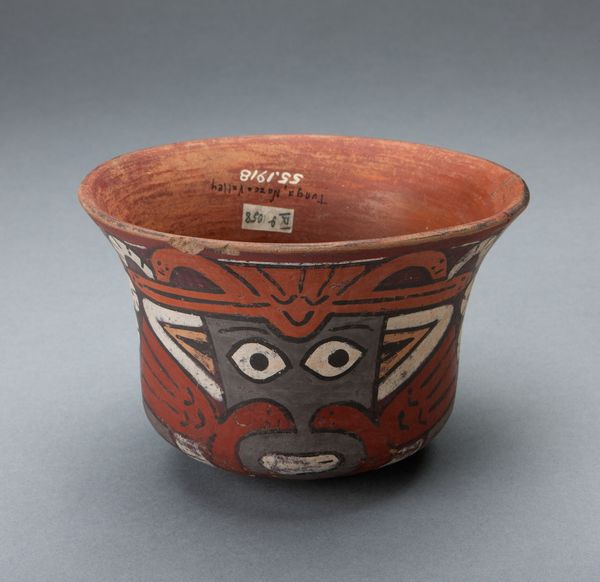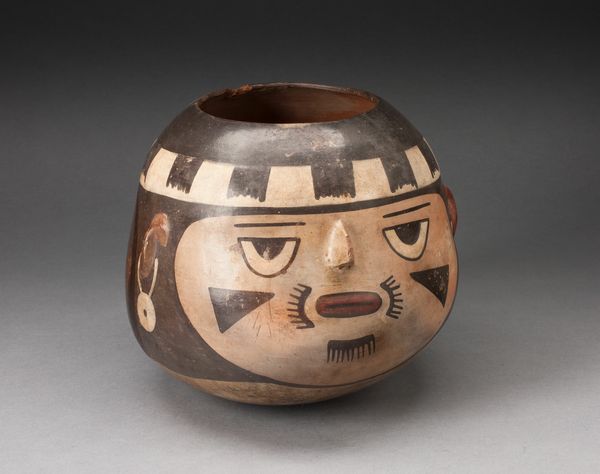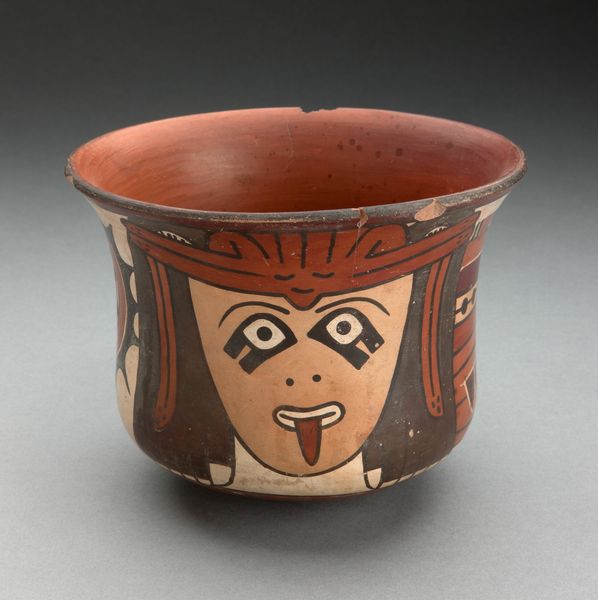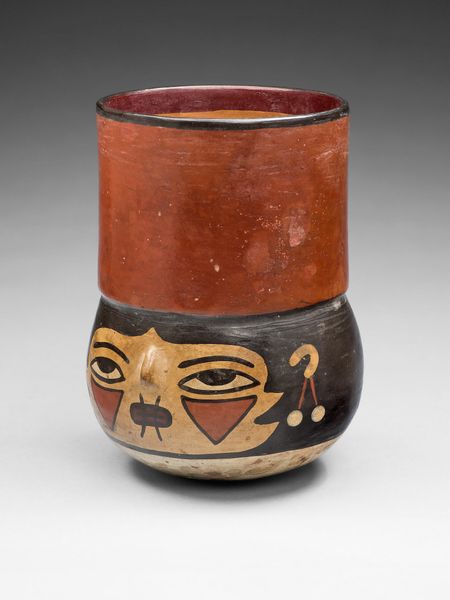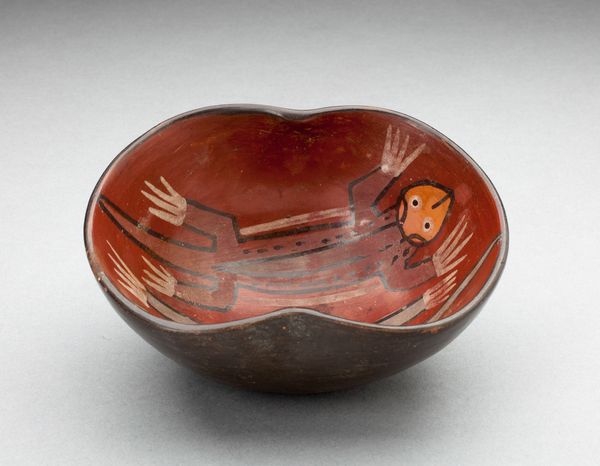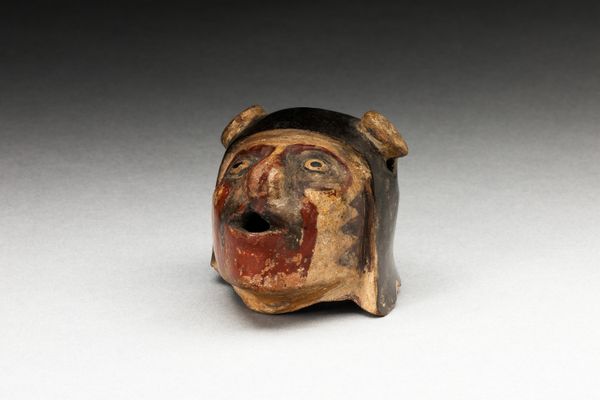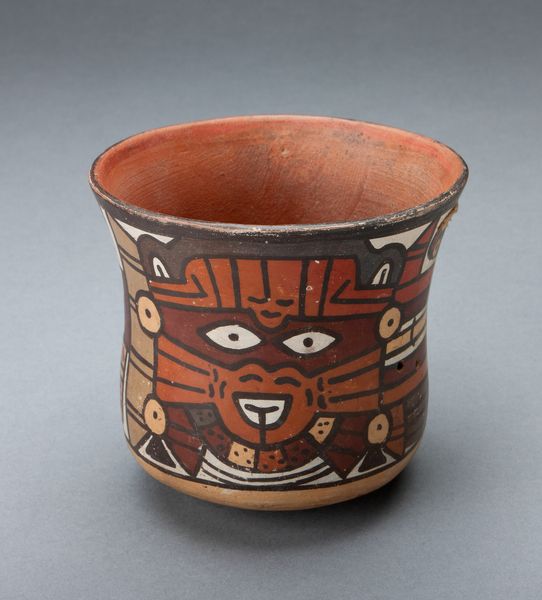
Jar in the Form of an Abstract Human Head, Probably a Trophy Head c. 180 - 500
0:00
0:00
ceramic, earthenware
#
portrait
#
ceramic
#
figuration
#
earthenware
#
ceramic
#
indigenous-americas
Dimensions: 10.2 × 12.2 cm (4 × 4 13/16 in.)
Copyright: Public Domain
Curator: So, here we have an earthenware jar crafted by the Nazca people, likely sometime between 180 and 500 AD. The Art Institute calls it "Jar in the Form of an Abstract Human Head, Probably a Trophy Head." What's your take? Editor: It’s strangely cheerful for a potential trophy head! Those white teeth—they seem almost comical against the seriousness suggested by the squared-off eyes and rigid geometry. It's a weird blend. Curator: Absolutely. The face is stylized with these ochre and brownish geometric shapes, forming the cheeks and brow, all laid onto that earthy red-orange slip. Editor: Yes, the geometric scheme almost renders a primitive form of makeup and face paint on it. But consider how the smooth, polished surface contrasts with the rough, utilitarian form of the jar itself. Is it art? Or is it craft? Or is it more about ritual than aesthetic expression, that its creator aimed to fulfill a social obligation rather than create an "artwork"? Curator: A bit of all three, maybe! Remember, the Nazca were sophisticated in their understanding of ceramic production, creating vessels with very thin walls, perfectly fired, vibrantly decorated, using mineral pigments. The abstracted face, whether intended as an honor or some symbolic control over the deceased, reflects complex social and ritual practices. Editor: It speaks to how deeply intertwined art was with daily life for them. There isn’t the modern distinction between “fine art” and the everyday object that we carry in our contemporary view. Looking at the nose, how it projects simply, almost as an afterthought… I suspect the eyes, more than anything, were key to its design, even the ears with their prominent, bulge form. Curator: Well, I think that looking at a work like this makes us question our labels. Trophy, art, ritual object... all words that point towards deeper understandings. Editor: Yes, it is strange how such a rudimentary artifact could carry complex social ideas—we certainly shouldn't simply view it with modern eyes only! Curator: Precisely. A potent reminder that things can be far deeper than the jar's interior space might suggest.
Comments
No comments
Be the first to comment and join the conversation on the ultimate creative platform.
